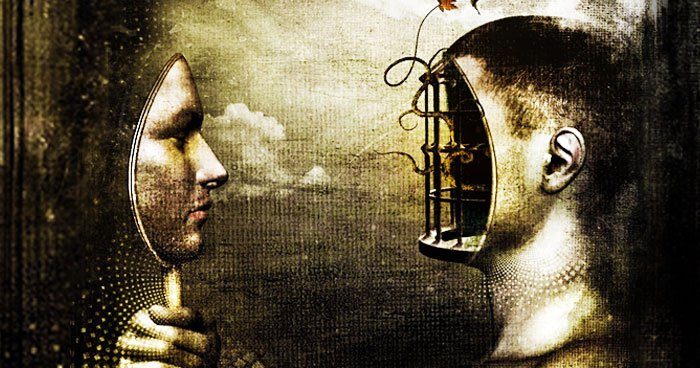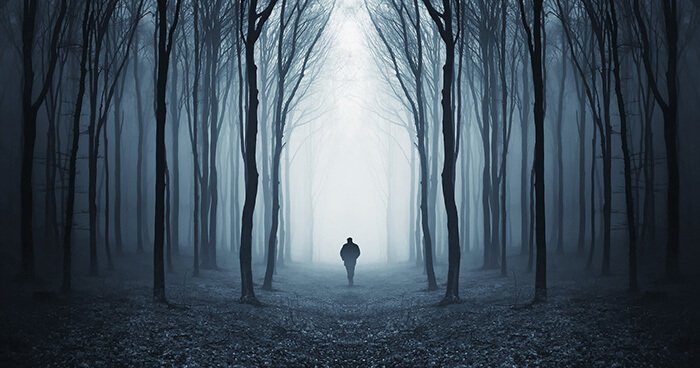On 16 September 2013, Aaron drove into Washington's Navy Yard. It was eight o'clock in the morning. He'd been working there not long before, and security let him in. He walked out of the car with a large bag and briefly disappeared into a toilet. Minutes later the security cameras caught him holding a shotgun. Aaron walked briskly and hid behind a wall for a few seconds before advancing through the building. Within 30 minutes twelve people were dead. He killed randomly, first using his shotgun and then, after running out of ammunition, using the handgun belonging to a guard he'd just killed. He died after an exchange of gunfire with the police.
It took only 24 hours for a journalist to notice that Aaron had been a Buddhist, prompting her to write an article that asked, 'Can there be a less positive side to meditation?' Western Buddhists immediately reacted. One wrote, "This man represented the Dharma teachings no more than 9/11 terrorists represented the teachings of Islam."
Others explained that he had a history of mental health problems. However, some noted that Buddhism, like other religions, has a history that links it to violence. And meditation, for all its de-stressing and self-development potential, can take you deeper into the darkest recesses of your own mind than you may have wished for.
This brings up questions I have wrestled with, both as a psychologist and in my own spiritual practice. Do I have unrealistic positive expectations about what meditation can do? Can it also have adverse effects, finding its way to non-spiritual, even non-peaceful ends?
Dark Recesses of The Mind
When something goes wrong, the way it did with Aaron Alexis, we can't look the other way - rationalizing that he wasn't a true Buddhist or meditator isn't enough. We need to examine the less familiar, hidden facets of meditation - a technique that for centuries has been used to cultivate wisdom, clarity of mind, and selflessness. We need to ask ourselves if meditation has a dark side. I'd come across the idea that without the guidance of an expert teacher, meditation can have adverse effects, but I'd thought that this was a metaphor for the difficulties we might encounter as we venture deep into ourselves. I hadn't considered that the adverse effects might be literal ones.
Meditation and Mental Health
Then, one day, I heard a first-hand account that opened my eyes to my naïvety. At the time, I was teaching an open course on the psychology of spirituality. There were a few twenty-year-olds, but the majority of students were in their late fifties and early sixties and represented a combination of retired lawyers, Anglican priests, psychiatrists, and three or four yoga and meditation teachers. Louise was one of them.
In her late fifties and lean with dark, short hair, Louise was a quiet member of the group, who - in general - spoke up only when she felt she had something important to say. She had taught yoga for more than twenty years, stopping only when something unexpected happened that changed her life forever. During one meditation retreat (she'd been on many), her sense of self changed dramatically. "Good," she thought initially, "It must be part of the dissolving experience." But she couldn't help feeling anxious and frightened. "Don't worry, just keep meditating and it will go away," the meditation teacher told her. It didn't.
She couldn't get back to her usual self. The last day of the retreat was excruciating: her body shook, she cried and panicked. The following day, back at home, she was in pieces - her body was numb, she didn't want to get out of bed. Louise's husband took her to the GP and, within hours, she was being seen by a psychiatrist. She spent the next 15 years being treated for psychotic depression and for part of this time, she had to be hospitalized.
Louise had chosen to give a presentation on the psychology of spiritual experience, as part of her assessment on the course. She talked lucidly about her illness and its possible origins, including a genetic predisposition to mental health problems. She explained that she had gradually taken up yoga practice again, but had never returned to meditation retreats. "I had to have electroconvulsive therapy," she told the class. That means strong electric shocks going through your skull; a treatment that is not only painful, but leads to memory loss in the short term.
Diving Too Deep
I was stunned. I looked through the medical and psychological databases in search of articles on the possible adverse effects of meditation. There were some, most of them case studies. One of the most striking, written in 2001 by a British psychiatrist, told the story of a 25-year-old woman who, like Louise, had a serious mental health problem following meditation retreats. The first time she was admitted to hospital her symptoms included:
This woman, referred to as Miss X, was diagnosed with mania. After six weeks of medication, her symptoms were controlled. A psychiatrist saw her regularly for two years and she started twice-weekly psychotherapy. Then, she took part in a Zen Buddhist retreat and was hospitalized again.Thought disorder with flight of ideas, her mood was elevated and there were grandiose delusions including the belief that she had some special mission for the world: she had to offer 'undying, unconditional love' to everyone. She had no [critical] insight.
Adverse Experiences
Interesting, I thought, but I was still unconvinced. All these examples could be individuals with a strong predisposition to mental illness. As I looked further into the scientific literature though, I found other kinds of evidence. In 1992, David Shapiro, a professor in psychiatry and human behaviour at the University of California, Irvine, published an article about the effects of meditation retreats. Shapiro examined 27 people with different levels of meditation experience. He found that 63 percent of them had at least one negative effect and 7 percent suffered profoundly adverse effects. The negative effects included anxiety, panic, depression, increased negativity, pain, feeling spaced out, confusion and disorientation.
Perhaps only the least experienced felt these negative experiences. Several days of meditation might overwhelm those who were relatively new to the practice. Was that the case? The answer was no. When Shapiro divided the larger group into those with lesser and greater experience, there were no differences: all the meditators had an equal number of adverse experiences. An earlier study had arrived at a similar, but even more surprising conclusion. Not only did those with more experience of meditating find themselves with negative symptoms - particularly anxiety, confusion and restlessness - they also had considerably more adverse effects than the beginners.
Meditation in Moderation
Amid the small pile of articles on the adverse effects of meditation, I was surprised to find two by Arnold Lazarus and Albert Ellis, co-founders of CBT (Cognitive Behaviour Therapy). In a 1976 article, Lazarus reported that a few of his own patients had had serious disturbances after meditating; these included depression, ongoing tension and a serious suicide attempt. Lazarus strongly criticized the idea that 'meditation is for everyone'. Instead, he argued that 'one man's meat is another man's poison', and that researchers and therapists need to know both the benefits and the risks of meditation for different kinds of people.
Albert Ellis shared Lazarus' misgivings about meditation. He believed it could be used as a therapeutic tool, but not with everyone:
Overall, he believed meditation could be used only in moderation as a 'thought-distracting' or 'relaxing' technique.A few of my own clients have gone into dissociative semi-trance states and upset themselves considerably by meditating.
The Dangers of Dissolution of Self
Razzaque is a London-based psychiatrist whose own Buddhist meditation practice has led him to re-evaluate the meaning of mental illness. He argues that many of the psychotic experiences his patients describe resemble mystical experiences of ego-dissolution that are known to occur after years of meditation practice.
Razzaque suggests that mental breakdowns are part of a spiritual-growth process, in which we learn to see the self for what it is - an illusion. He describes his own mystical experience in the book:
In the days that followed, however, life wasn't so blissful. Razzaque found that he couldn't contain his joyful experience and there was something deep within, pulling him in the opposite direction.I found myself descending into a deeply meditative state; I somehow travelled through the sensations of my body and the thoughts in my mind to a space of sheer nothingness that felt, at the same time, like it was somehow the womb of everything. I felt a sense of pure power and profound energy as I came upon a sudden brilliant light and a profound feeling of all-pervading joy...I was everything and nothing at the same time.
I could sense the powerful currents in my whirling mind - the self-doubts and the dents in self-esteem sucking me towards a ball of depression, the anxieties and fears threatening to balloon into full-blown panic, obsessions or defensive compulsions, and the speed of it all that risked pushing me into a manic state.A Psychotic Episode or Spiritual Experience?
Others before Razzaque have trodden a similar path and pointed out similarities between the symptoms of psychotic people and spiritual experiences. In the late 1980s, Stan Grof and his wife edited a book on spiritual emergencies. They caution clinical psychologists and psychiatrists to be aware of and respect what on the surface may look like mental illness, but is, in fact, the expression of spiritual experiences that are having a profound, though momentarily stressful, effect.
Their pioneering work came to fruition when a new category was added to the fourth edition of the Diagnostic and Statistical Manual of Mental Disorders (DsM-IV), used by psychiatrists worldwide - that of religious and spiritual problems.
With a category of religious and spiritual problems, clinicians are potentially able to recognize what are genuine manic, depressive or psychotic episodes and what are the non-pathological, though sometimes difficult, effects of meditation. But it's far from a straightforward distinction. David Lukoff, the clinical psychologist who co-authored this new category, admits that his interest in the topic arose in 1971, when he spent two months experiencing his own spiritual crisis - fully convinced that he was the reincarnation of Buddha and Christ, with a mission to save the world.
Repressed and traumatic material can easily resurface during intense meditation, which made me realize, with a sense of relief and humility, that meditation need not be a panacea to cure every ill, nor a tool to moral perfection. Perhaps we shouldn't treat it very differently from prayer, which can quiet our minds, give us some comfort and lead us towards a deeper place, where we can explore who we are or be closer to God.
Tread Carefully on The Spiritual Path
Perhaps meditation was never supposed to be more than a tool to help with self-knowledge; one that could never be divorced from a strong ethical grounding of who we are and the world we live in. In Patanjali's sutras, when he describes the various aspects of yoga, meditation is only one of them. The first one, the very basis of a healthy and eventual selfless being, is self-restraint (yama), which he defines as 'non- violation, truthfulness, non-stealing, containment, and non-grasping'. And to be sure that these are the definite and non-debatable foundations he adds: these restraints are not limited by birth, time or circumstance; they constitute the great vow everywhere.
Only with this strong foundation, can the other limbs of yoga (as Patanjali calls them) emerge, including the asanas, pranayama, meditation and the blissful experiences of unity with the ground of being. Despite its dark side and the limitations of the current scientific research, I still think meditation is a technique with real potential for personal change, if properly guided and taught within a larger spiritual-ethical framework.
This piece is a slightly adapted excerpt from The Buddha Pill, published with permission from Watkins Media.







What gurdjieff said about being an obyvatel (everyday man) first, before going deeper makes sense. If you aren't in sync with the good and bad of reality, accessing altered brain states can rewire your brain to change the way you see reality and yourself.
The other article about inverse thinking, which the stoics practiced is probably the most sober way to approach things. Without that, it seems like the negative gets suppressed and twisted, which comes out in meditation or drug altered states of mind.
I feel like the best meditation is small things, like using it to follow your thought loops and body impulses. This reduces stress and makes you work on what you can do to be rational. To go into dissociative states as these religious practices teach is not very productive if you have to go back to everyday life. In a monastery, the environment supports it but no way in hell you can be in sync with society as normal... And that's why I think these cases happen, people's brains are losing connection to their normal environment!